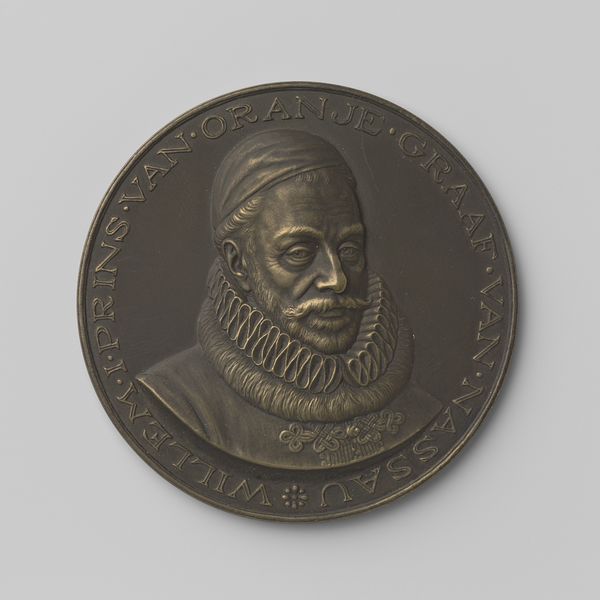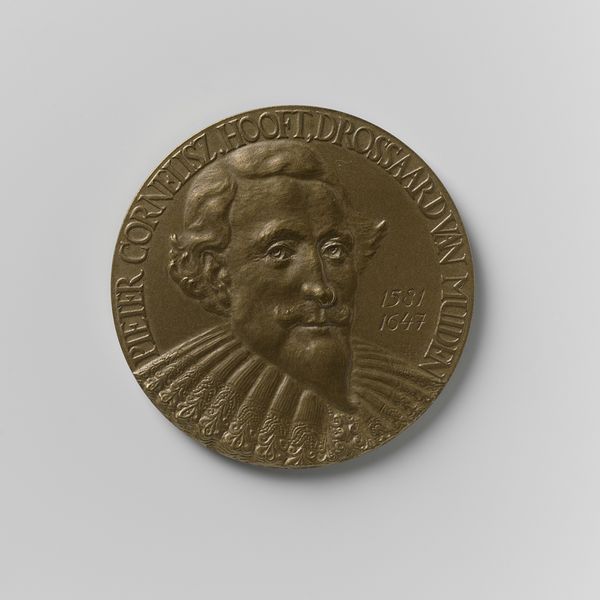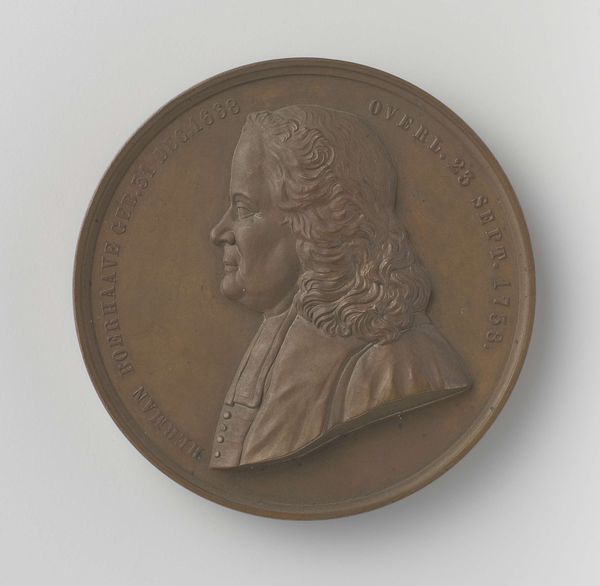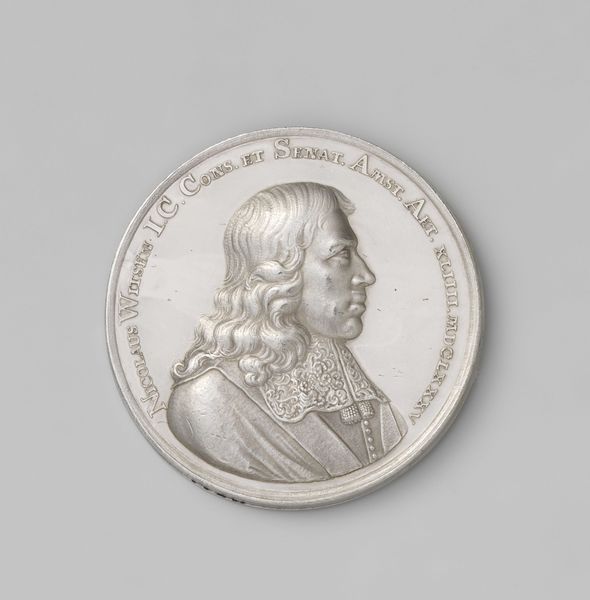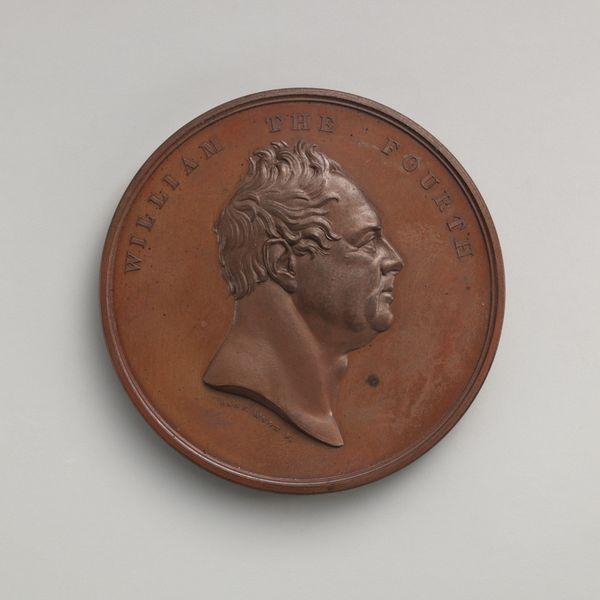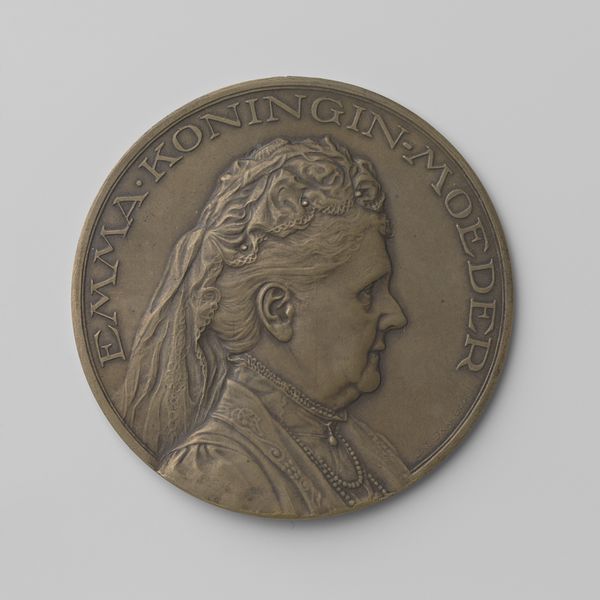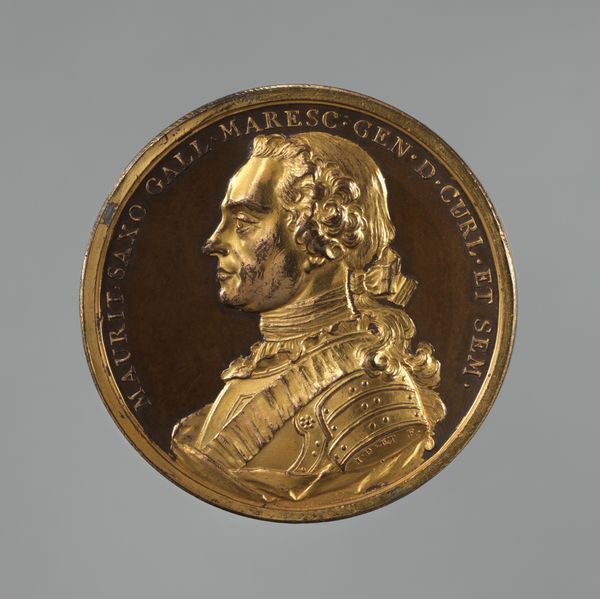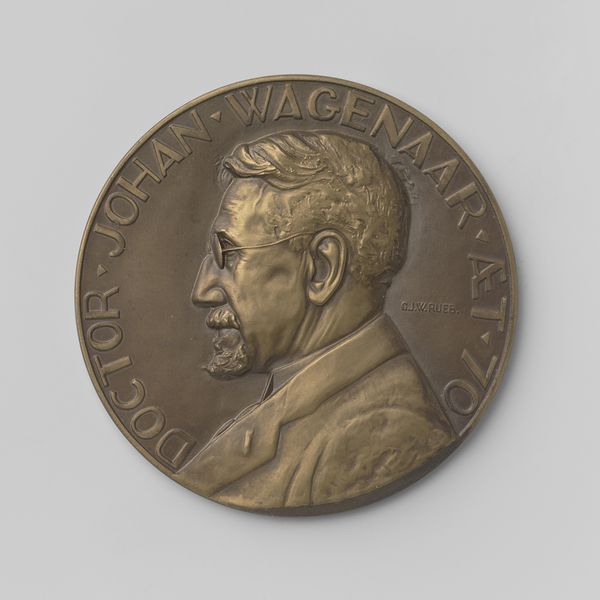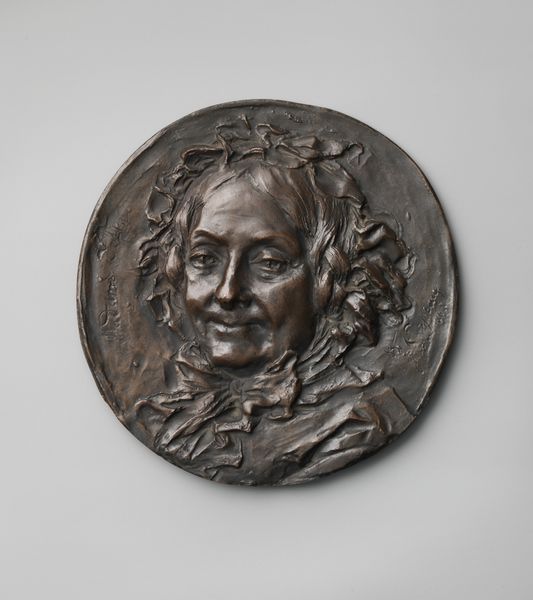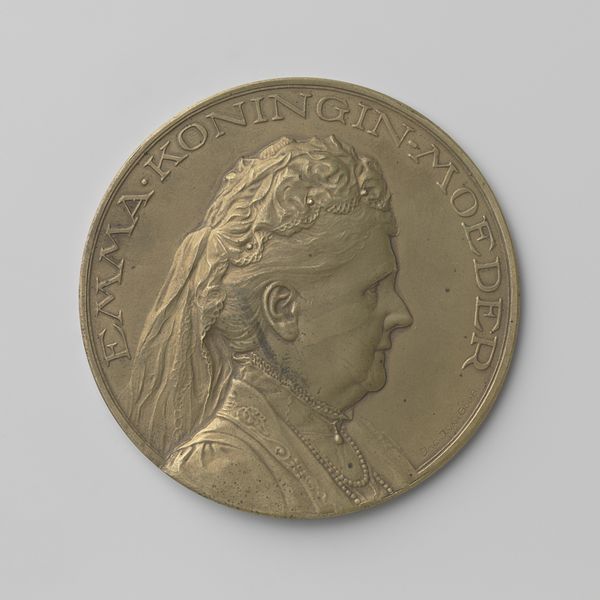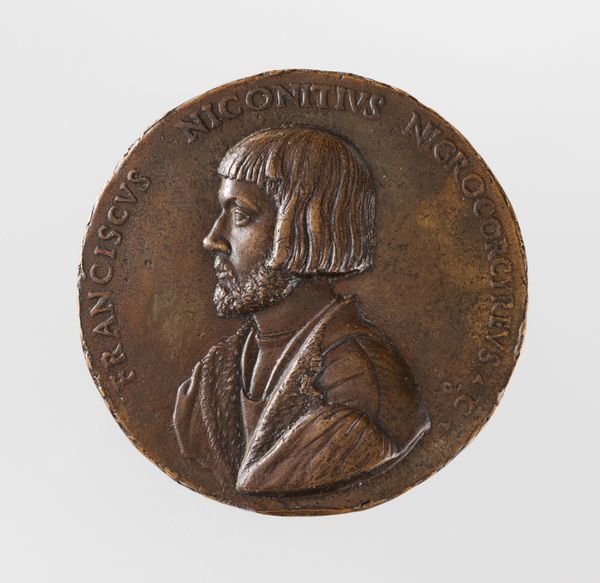
Vierhonderdjarige herdenking van de geboorte van Philips Marnix van Sint Aldegonde 1940 1940
0:00
0:00
metal, relief, bronze, sculpture
#
portrait
#
metal
#
relief
#
caricature
#
bronze
#
coloured pencil
#
sculpture
#
portrait drawing
#
history-painting
#
statue
Dimensions: diameter 6.0 cm, weight 85.39 gr
Copyright: Rijks Museum: Open Domain
Editor: This is a bronze relief, "Vierhonderdjarige herdenking van de geboorte van Philips Marnix van Sint Aldegonde 1940," by Han Wezelaar. The detail is striking. It feels like a very official commemoration. What catches your eye when you look at this piece? Curator: What I notice first is the material—bronze, a deliberate choice steeped in history and its own production chain. It’s a durable, costly medium often associated with power and commemoration. Consider the process: the labor involved in the mining of the metals, the smelting, the casting… it all contributes to the artwork's meaning. Do you think the choice of bronze elevates this relief beyond a simple commemorative object? Editor: Definitely. It gives it a weight and permanence. I hadn't thought about the labor involved. So, it's not just about remembering Philips Marnix, but also about showcasing power, and the bronze-making process, am I understanding that correctly? Curator: Exactly. And think about 1940, the year it was made. World War II was raging. Resources were scarce. The choice to use bronze, a material often diverted to the war effort, adds another layer of complexity. Was this a deliberate statement about cultural preservation amidst conflict, or something else entirely? Perhaps an exploration of cultural identity or resistance through traditional means and accessible to consumption? Editor: That makes so much sense. Seeing it now, against the backdrop of the war, shifts its meaning. I initially saw a simple commemoration, but it's far more complex. Curator: Indeed. By examining the materiality and production of art, we can challenge conventional interpretations and uncover richer social and historical narratives. Understanding the materials shifts this from simple craftsmanship into commentary of history. Editor: I never would have picked up on the wartime context influencing the bronze casting. Thanks so much! I'll be more aware of materials going forward. Curator: And I will certainly think twice about bronze and material culture! Thank you.
Comments
No comments
Be the first to comment and join the conversation on the ultimate creative platform.
